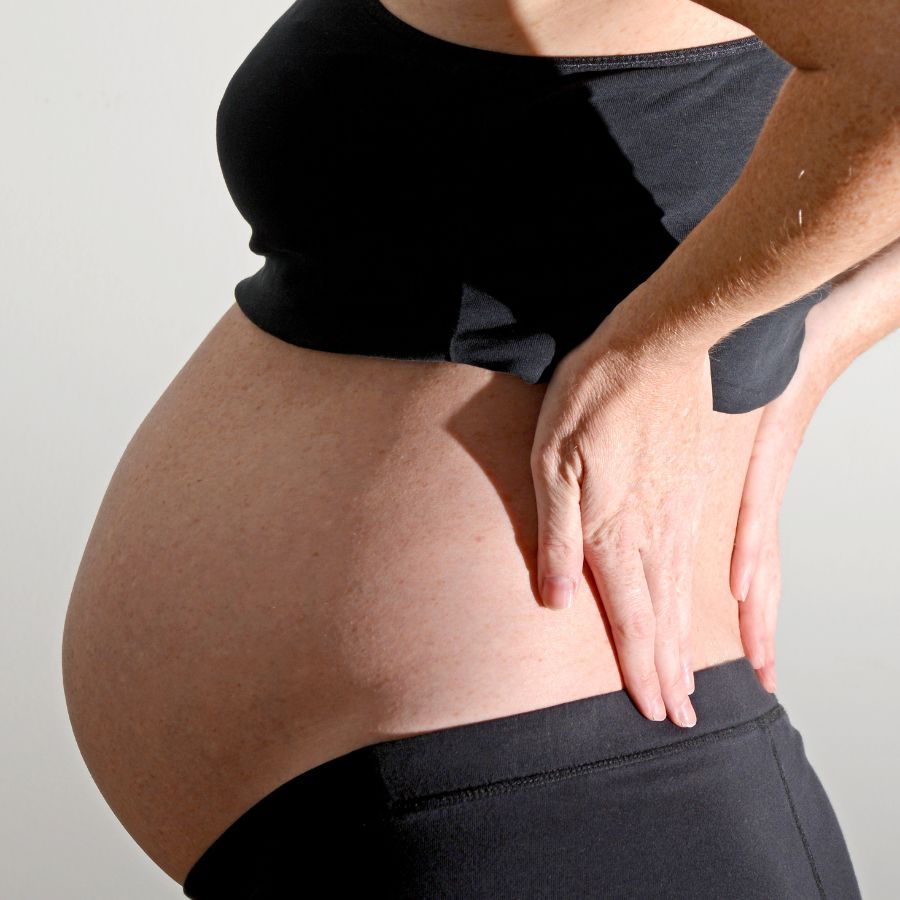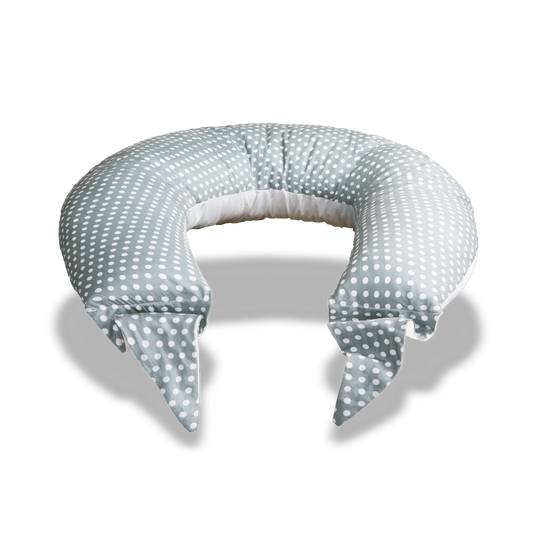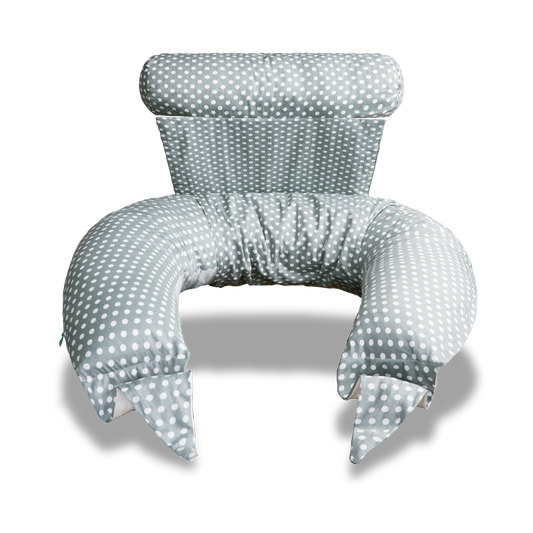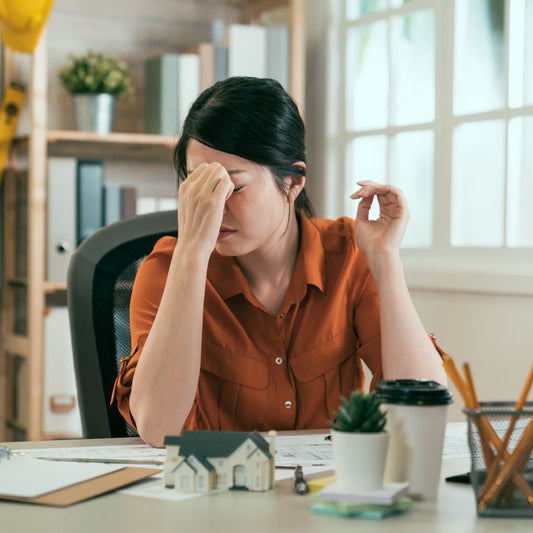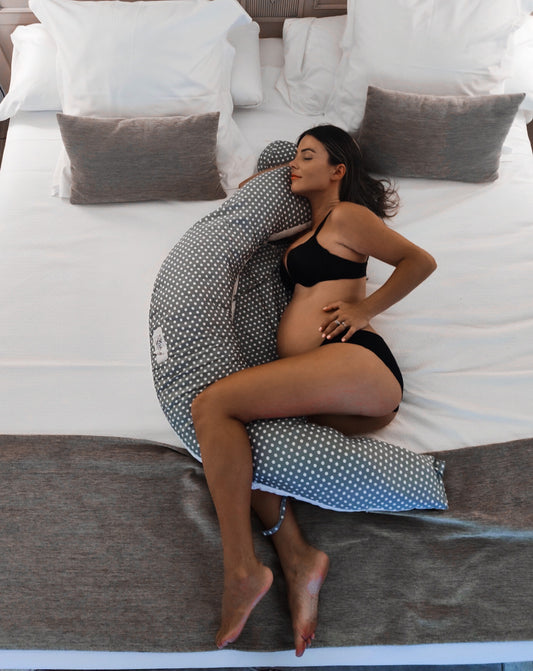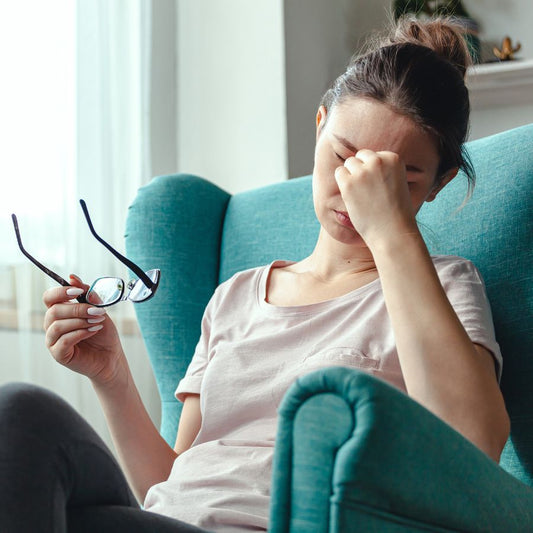What causes pregnancy back pain - sacral pain pregnancy?
A woman’s body changes throughout pregnancy as it seeks a new balance. Her belly grows and her centre of gravity shifts, this can cause back ache, pelvic floor pain, and pain in sacrum during pregnancy.
There are two main types of back pain in pregnancy:
- Lumbar pain, in the lower back
- Posterior pelvic pain (at the back of the pelvis), below and at the side of the waist and at the sides of the coccyx. Commonly known as a form of Pelvic Girdle Pain (PGP).
Here’s why you experience sacrum pain during pregnancy
Your sacrum is located just above the coccyx, the last bone of the spinal column.
Although pain in the sacrum can occur at any time of life (e.g., following a fall), it’s very common during pregnancy.
There are several reasons for this:
- The sacrum area is subjected to great stress throughout pregnancy, due to the shift in a woman's centre of gravity and posture, in addition to the weight of her growing unborn baby.
- The baby's head is resting on the lower back, putting pressure on the sacrum.
- During pregnancy, a hormone called relaxin causes ligaments to become more flexible to allow the cervix to dilate during labour. However, if the ligaments do not stabilise the bones, they may stretch or tear.
- Constipation, not uncommon in pregnancy, can cause pressure on the bone.
Sacrum pain pregnancy: remedies for pelvic girdle pain relief
Pain in the sacrum area is sharp and constant. You tend to feel it when sitting, lying down and standing. How can you alleviate it and regain the smiley spirit you’re notorious for? Here's what can help you!
Use a belly band
A pregnancy belt lifts your bump up by distributing weight evenly across your spine and pelvis. This will ensure your sacrum area doesn’t carry the full load of your baby’s weight and you will feel lighter.
You’ll find you have more energy throughout the day, as you’ll be able to move more freely without feeling weighed down by your pregnancy bump.
Don't sleep on your back
When you are experiencing pain in your sacrum area, it’s a good idea not to sleep on your back, but to lie on your side, preferably with the help of a pregnancy pillow such as Koala Hugs.
Pregnancy pillows support the weight of your baby bump from your back, providing pregnancy back pain relief. They also help maintain your hips in the correct position.
The best position to sleep while pregnant is always on your side, particularly on your left side, which prevents your unborn baby from pressing on your liver and facilitates blood flow.
Sleeping on your back while pregnant compresses the vena cava, reducing blood flow to the heart and brain. In addition, the weight of the pregnancy bump puts excessive strain on your back, causing discomfort.
When sitting, keep a pillow behind your back
Your Koala Hugs pregnancy pillow is useful for this too! When sitting down or when in a semi-reclining position, it is an excellent pregnancy back support as it relieves strain on your lower back, alleviating both back and sacrum pain.
Koala Hugs Plus has an additional neck support cushion, for maximum support to your back.
Physical activity is always good for you
Physical activity while pregnant is a great help against pregnancy discomforts: a daily walk, swimming, Pilates, or yoga will all help with combating back pain.
There are specific exercises you can do to strengthen your lower back and pelvic muscles and to support the excess weight from your bump as well as prevent back ache.
It goes without saying that you should always consult your doctor before taking up any sporting activity during pregnancy, and always inform your personal trainer or gym that you are expecting a baby. They will be able to advise you on which exercises are most appropriate for you.
You can also find specific courses tailored for pregnant women and specialised personal trainers for pregnancy and postnatal recovery.
Another thing you can do for back and pelvic pain, as well as sacrum pain, is to undertake a course of physiotherapy. This can be very beneficial for all those minor physical discomforts which can occur during pregnancy, such as back ache, pelvic girdle pain and pain in the sacrum area.
The information contained on this Site is purely of an informative nature and does not replace any diagnosis or treatment advice received from a doctor. We recommend that you always seek advice from your family doctor and / or specialists.

